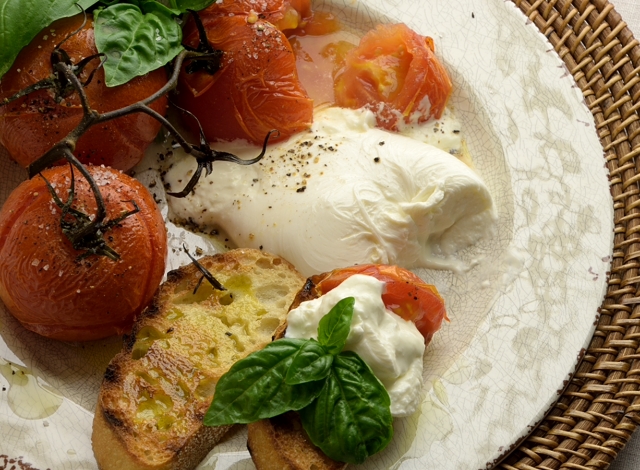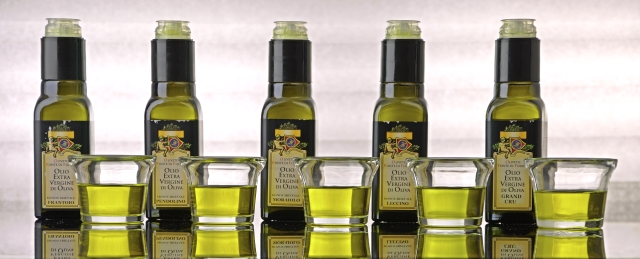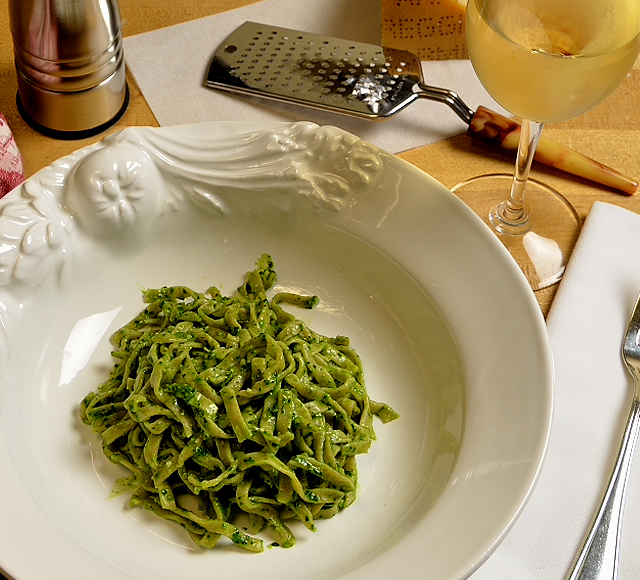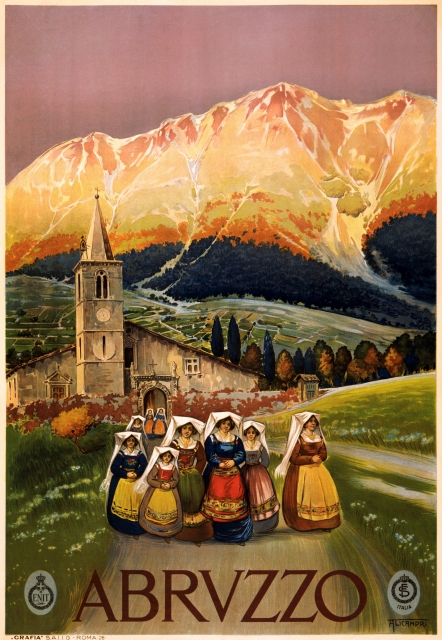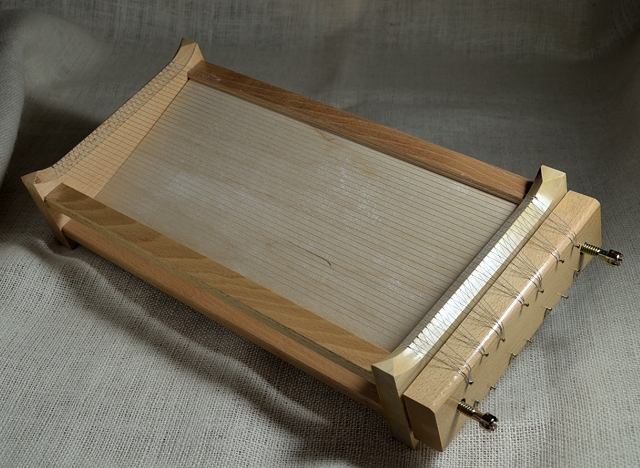Topic Index
The font size for a topic word is sized by the number of articles that reference that topic. The more articles the bigger the font.
Click on a word to search for posts with that topic. This page will reload with the search results.
Late Summer is Tomato Time
People are talking about fall. But it is not fall in Los Angeles. Not by a long shot. I know this because in gardens up and down my street, tomato plants continue to produce a riot of unmatched end-of-summer color.
With a glorious profusion of red, yellow, and white currant tomatoes, as tiny as your pinkie fingernail, to the slightly larger grape tomatoes, right up to two pound beauties like Gold Medal and Mortgage Lifters of all stripe, the plants continue to produce with remarkable abandon. But the question persists. What to do with all these tomatoes? Read the remainder of this entry »
Fonte di Foiano Extra Virgin Olive Oil
Maccheroni alla Chitarra with Roasted Tomatoes
Extra virgin olive oil is the new wine. Like fine wine, it is a delicate thing, its quality a function of the olive varietal or cultivar (type of olive) from which it is made, the area and conditions under which the fruit is grown, and harvesting time and technique. Factor in the art and skill of the makers who press and blend the oil, and you will get a sense of what I mean.
Just as wine nerds took over the table conversation with a new vocabulary forty years ago, so olive oil enthusiasts are introducing food lovers to the limitless variety and nuances of extra virgin olive oil. From personal experience I can say that even if you grew up consuming olive oil every day, until you have tasted a fine extra virgin olive oil, you don’t know beans.
I have been tasting and cooking my way through extra virgin olive oils sent to me for review from Olio2go, a retailer of Italian extra virgin olive oils. Most recently I have indulged my every whim with a collection of five oils from Fonte di Foiano, a producer in Tuscany. The Fonte di Foiano oliveta is in Castagneto Carducci where the rich limestone and clay soil and briny air combine to produce particularly flavorful fruit. In the 1970’s the di Gaetano family breathed new life into the ancient groves, keeping some of the older trees and introducing newer, younger ones. Read the remainder of this entry »
Maccheroni alla Chitarra di Farro con Pesto di Cavolo Nero
Guitar Cut Farro Pasta with Black Kale Pesto
I was craving a hearty, but meatless pastasciutta, whole grain and packed with nutrients. The pasta was the easy part. When I want hearty pasta, I go right to the famous maccheroni alla chitarra of Abruzzo. Also known as pasta or spaghetti alla chitarra, the noodles are satisfying and toothsome.
I figured farro would be perfect for the pasta. An heirloom grain (triticum dicoccum), it is also known as emmer, and sometimes erroneously called spelt. Farro has been around for ages, literally. Documented as far back as the dawn of agriculture in Mesopotamia and The Fertile Crescent, the Roman legions conquered the world on their daily ration. Read the remainder of this entry »
Maccheroni alla Chitarra con Ragù d’Agnello
From Abruzzo comes Guitar Cut Pasta with Lamb Ragù
Abruzzo – from the majestic Gran Sasso to its beaches on the Adriatic Sea this part of Italy has postcard perfect terrain. To walk in the mountains of Abruzzo is to walk the age old route of the transumanza – the seasonal sheep migration, and indeed, sheep figure prominently in the socioeconomic history of this region and its cuisine.

Gaetano Alfonso Crocetti
Born 1894 Montesilvano, arrived New York 1913, died 1967 Los Angeles, California
My grandfather, Gaetano Crocetti was born in Montesilvano, Abruzzo. He loved the food of his homeland, and although I have written previously about Ferratelle, the Abruzzese take on Pizzelle, this region has as its most singularly recognizable contribution to Italian cookery an implement known as the chitarra, a tool used to cut pasta. In her book Food and Memories of Abruzzo Anna Teresa Callen writes that this tool appears in manuscripts dating as far back as the thirteenth century.
Indeed la chitarra is part of Abruzzese culture, Read the remainder of this entry »
